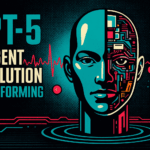The rise of autonomous AI systems marks a fundamental shift in how businesses operate
Microsoft has unveiled its most ambitious artificial intelligence initiative yet: a comprehensive “agent factory” platform that promises to transform how enterprises build, deploy, and manage autonomous AI systems. Microsoft Built around Azure AI Foundry, this industrial-grade platform represents Microsoft’s strategic bet on what CEO Satya Nadella calls the “era of AI agents” – intelligent systems that can reason, act, and collaborate independently across business workflows. Microsoft +4
The numbers tell a compelling story. Over 230,000 organizations are already using Microsoft’s agent-building platforms, MicrosoftMicrosoft creating 400,000 custom AI agents in just the past quarter alone. Microsoft With 70% of Fortune 500 companies now deploying Microsoft’s AI solutions Microsoft +2 and the company processing over 100 trillion tokens quarterly, MicrosoftMicrosoft the agent factory has quickly become central to Microsoft’s $13 billion annual AI revenue run rate – up an extraordinary 175% year-over-year. Sec +3
“Think of Azure AI Foundry as an assembly line for intelligent agents,” Microsoft’s technical documentation explains. “Like any modern factory, it brings together different specialized stations, each responsible for shaping part of the final product. Instead of machines and conveyor belts, the Agent Factory uses models, tools, policies, and orchestration to build agents that are secure, testable, and production-ready.” Microsoft +2
Understanding Microsoft’s agent factory vision
At its core, Microsoft’s agent factory concept represents a fundamental rethinking of how AI systems are built and deployed. Rather than treating each AI implementation as a custom project, the platform provides standardized components, processes, and governance frameworks that enable organizations to create production-ready agents “in hours rather than months,” according to Microsoft executives. Microsoft
The scope of this initiative extends far beyond simple chatbots or assistants. Microsoft envisions what it calls an “open agentic web” – a future where billions of AI agents actively initiate tasks, coordinate with other systems, and operate autonomously on behalf of users and organizations. SourceMicrosoft Industry analysts project that by 2028, approximately 1.3 billion AI agents will be deployed globally, Grandviewresearch +3 with Microsoft positioning itself as the primary platform provider for this transformation. Reuters
“We’ve entered the era of AI agents,” Nadella declared at Microsoft Ignite 2024. “We are teaching a new set of artificial intelligence tools how to act on our behalf across our work and life.” MicrosoftAssociated Press
The platform’s architecture reflects this ambitious vision. Azure AI Foundry serves as the central hub, providing access to over 1,800 AI models, Microsoft including OpenAI’s GPT series, Anthropic’s Claude, Meta’s Llama, and Microsoft’s own specialized models. Sec +3 This model diversity ensures organizations can select the most appropriate AI capabilities for their specific use cases while maintaining consistent development and deployment processes. Microsoft
Breakthrough announcements reshape the landscape
Microsoft’s agent factory initiative gained significant momentum throughout 2024 and 2025, marked by a series of major announcements that expanded both capabilities and adoption. At Microsoft Ignite 2024 in Chicago, the company unveiled Azure AI Foundry Agent Service in public preview, introducing autonomous AI agents across Microsoft 365 and Dynamics 365 ecosystems. Microsoft +3
The announcements included several specialized agents that demonstrate the platform’s versatility. The Interpreter Agent provides real-time speech-to-speech translation in nine languages within Teams meetings. The Facilitator Agent manages meetings, tracking action items and ensuring follow-through. The Project Manager Agent automates complex project planning and execution workflows. Source
“Thanks to groundbreaking advancements in reasoning and memory, AI models are now more capable and efficient,” noted Frank Shaw, Microsoft’s Chief Communications Officer, highlighting the technical breakthroughs enabling these new capabilities. VentureBeatMicrosoft
Microsoft Build 2025 in Seattle marked another major milestone, with Azure AI Foundry Agent Service reaching general availability. MicrosoftMicrosoft The company introduced an Agent Store for Microsoft 365 Copilot, enabling organizations to share and distribute pre-built agents across their enterprises. MicrosoftMicrosoft Multi-agent orchestration capabilities launched, allowing specialized agents to collaborate on complex tasks – a capability Microsoft’s VP of AI Agents, Ray Smith, describes as crucial: “It’s very hard to create a reliable process that you squeeze into one agent. Breaking it up into parts improves maintainability and makes building solutions easier, but it also significantly enhances reliability as well.” VentureBeat +2
Perhaps most significantly, Microsoft announced support for the Model Context Protocol (MCP), which the company describes as “USB-C for AI” – a universal standard enabling agents to communicate across different systems and platforms. Reuters +2 This open protocol approach reflects Microsoft CTO Kevin Scott’s vision of creating “an open agentic web” where agents from different companies can seamlessly collaborate. ReutersMicrosoft
Technical architecture powers enterprise-scale deployment
The technical foundation of Microsoft’s agent factory centers on Azure AI Foundry, a comprehensive platform that combines models, development tools, and enterprise services into a unified system. Sec +3 The architecture supports everything from simple single-agent solutions to complex multi-agent orchestrations handling enterprise-wide workflows. Microsoft
At the heart of the platform lies the Azure AI Foundry Agent Service, a fully managed offering that handles the complex infrastructure requirements of running agents at scale. The service manages conversation threads, orchestrates tool calls with automatic retry logic, implements content safety filters, and integrates with Microsoft Entra ID for enterprise-grade identity management. MicrosoftMicrosoft This infrastructure abstraction allows developers to focus on agent logic rather than operational concerns. Microsoft
Microsoft provides multiple development frameworks tailored to different use cases and expertise levels. Semantic Kernel, now at version 1.0 with production stability guarantees, serves as the enterprise-grade SDK for building single-agent solutions. Microsoft Available for C#, Python, and Java, it includes an extensive plugin ecosystem for connecting to enterprise data sources and services. Microsoft +3
For more experimental and research-oriented scenarios, Microsoft offers AutoGen, an open-source framework specializing in multi-agent patterns. AutoGen enables event-driven architectures supporting long-running autonomous agents that can operate across organizational boundaries. Microsoft is actively working to converge these frameworks, with a shared runtime planned for early 2025 that will provide seamless migration paths from AutoGen experimentation to Semantic Kernel production deployments. MicrosoftMicrosoft
The platform’s integration with Microsoft’s broader ecosystem provides unique advantages. Copilot Studio offers a low-code/no-code environment where business users can create agents using natural language descriptions. MicrosoftInfoq These agents can be deployed across multiple channels including Teams, web interfaces, and even third-party platforms like Slack and Twilio. Microsoft The platform currently supports over 1,400 connectors to enterprise data sources, Infoq enabling agents to access information from SharePoint, Dynamics 365, SAP, Salesforce, and numerous other systems. MicrosoftMicrosoft
Security and governance receive particular attention in the architecture. Microsoft Entra Agent ID provides first-class identity management for AI agents, enabling conditional access policies, multi-factor authentication, and least-privilege access controls. MicrosoftMicrosoft The platform includes comprehensive monitoring through OpenTelemetry tracing and Application Insights integration, allowing organizations to track agent behavior, performance, and potential security issues in real-time. MicrosoftMicrosoft
Competitive dynamics in the AI agent marketplace
Microsoft’s agent factory initiative operates in an increasingly competitive landscape where major technology companies are racing to capture the emerging AI agent market. The global AI agents market, currently valued at approximately $5.1-5.4 billion, is projected to reach between $47 billion and $196 billion by the early 2030s, representing compound annual growth rates exceeding 40%. Grandviewresearch +3
Google has emerged as Microsoft’s primary competitor in enterprise AI agents. Gemini 2.5 Pro leads several technical benchmarks in reasoning capabilities, Google while Google’s custom TPU silicon potentially offers 80% lower compute costs compared to Nvidia-dependent competitors like Microsoft. Google’s platform-agnostic approach and strong enterprise integrations through Workspace appeal to organizations seeking flexibility. However, Microsoft maintains advantages through deeper enterprise relationships and more comprehensive platform integration.
Amazon Web Services approaches the market through its Bedrock platform, offering model-agnostic agent capabilities that support multiple AI providers. AWS recently formed a dedicated AI agents business unit in 2025, signaling increased focus on this market. Search IT OperationsIT Pro While AWS brings strong cloud infrastructure and competitive pricing, it lacks the deep productivity suite integration that Microsoft offers through Office 365.
OpenAI, despite being Microsoft’s key partner with over $13 billion in investment, Business of Apps represents both an ally and potential competitor. Bloomberg +2 While OpenAI provides the foundational models powering many Microsoft agents, it also offers its own GPTs and Assistants platform. Reuters OpenAI’s massive consumer adoption with approximately 800 million monthly active users demonstrates strong market presence, Simple though it lacks Microsoft’s enterprise distribution channels and integration capabilities.
Anthropic has carved out a niche focusing on safety and reliability, with Claude 3.7 Sonnet leading in several coding benchmarks. Backed by a recent $3.5 billion funding round at a $61.5 billion valuation, Anthropic Anthropic appeals to enterprises prioritizing AI safety. However, like OpenAI, it lacks the comprehensive platform integration that Microsoft provides.
Market analysts consistently recognize Microsoft’s leadership position. Deutsche Bank notes that Microsoft is “jumping in with both feet to the vision of an agentic future” and is “best-positioned to reap benefits” given its platform breadth. Quartz Wedbush Securities goes further, stating that “Microsoft has the only game in town around a full AI platform.” CNBC
Real-world transformations across industries
The impact of Microsoft’s agent factory extends far beyond theoretical capabilities, with organizations across industries reporting significant operational improvements and cost savings. These real-world implementations demonstrate both the platform’s versatility and its tangible business value.
In the financial services sector, ABN AMRO Bank successfully migrated its customer service operations to Microsoft Copilot Studio, with its “Anna” agent now handling over 2 million text conversations and 1.5 million voice conversations annually. The bank achieved a 7% increase in intent recognition accuracy for Dutch language processing while automating 50% of all customer interactions. MicrosoftMicrosoft “Microsoft’s leadership and innovation in the AI space led us to select Microsoft Copilot Studio,” explains Bobby van Groningen, IT Lead at ABN AMRO. Microsoft
Air India’s transformation illustrates the platform’s ability to handle massive scale. The airline’s AI.g virtual agent, powered by Azure OpenAI Service with GPT-4, manages 30,000 customer questions daily across 1,300 topic areas. Remarkably, 97% of the airline’s 4+ million customer queries are now handled with full automation, developed in just 20-25 days. Microsoft +2 “We truly have Copilot as a copilot in our journey in terms of creating and transforming into your modern Air India,” notes Dr. Satya Ramaswamy, the airline’s Chief Digital and Technology Officer. MicrosoftMicrosoft
Manufacturing companies report equally impressive results. Fujitsu achieved a 67% productivity improvement in sales proposal creation using Azure AI Agent Service and Semantic Kernel, with specialized agents handling sales data analysis, proposal generation, and customer insights. Microsoft +3 Dow Chemical has deployed autonomous agents to process over 100,000 shipping invoices annually, anticipating millions in first-year savings on shipping operations alone. Microsoft +2
The healthcare sector showcases some of the most sophisticated agent implementations. Stanford Health Care uses an AI agent orchestrator for tumor board preparation, significantly reducing the administrative burden on medical staff. Microsoft The system coordinates multiple specialized agents to gather patient data, research relevant medical literature, and prepare comprehensive case presentations for oncology teams. Microsoft
Professional services firms are leveraging agents for knowledge management at unprecedented scale. Ernst & Young deployed a tax and legal research agent through Copilot Studio that provides its 75,000 global tax professionals with instant access to 21 million documents. MicrosoftMicrosoft The system delivers comprehensive answers anchored in curated content, tailored to specific country requirements for local compliance needs. Microsoft
Early adoption metrics reveal strong momentum. Forrester projects that 6.9 million US knowledge workers will adopt Microsoft 365 Copilot by the end of 2024, representing 8% of the US knowledge worker population. AI Today +2 User satisfaction varies, with an average rating of 3.1/5 reflecting both the transformative potential and current limitations of the technology. Fellowmind Organizations report time savings ranging from 1-10 hours per month per user, with some achieving significantly higher productivity gains.
Strategic integration and financial commitment
Microsoft’s agent factory initiative represents more than a standalone product – it embodies a fundamental shift in the company’s strategic direction. The platform serves as the cornerstone of Microsoft’s “Copilot everywhere” vision, positioning AI agents at the center of its future growth strategy.
The financial commitment underscores this strategic importance. Microsoft has invested over $13 billion in its OpenAI partnership alone, securing exclusive access to cutting-edge language models while providing the computational infrastructure OpenAI requires. Bloomberg +3 Beyond partnerships, Microsoft’s capital expenditures reached $21.4 billion in Q3 2025, up 53% year-over-year, with the majority directed toward AI infrastructure expansion. Microsoft +2
This investment is already generating substantial returns. Microsoft reports a $13 billion annual AI revenue run rate, representing 175% year-over-year growth. Microsoft Azure revenue grew 33% with AI services contributing 16 percentage points of that growth. Investopedia +2 The Microsoft Cloud achieved $40.9 billion in quarterly revenue, with AI becoming an increasingly significant component. Microsoft
The business model reflects sophisticated market segmentation. Consumer offerings like Copilot Pro at $20/month provide broad accessibility, while Microsoft 365 Copilot at $30/user/month targets enterprise customers. Microsoft +3 The Copilot Studio platform uses a pay-as-you-go model based on message consumption, allowing organizations to scale usage with demand. Microsoft Azure AI Foundry follows a granular billing model where customers pay only for consumed services, reducing barriers to experimentation.
Industry analysts express strong confidence in Microsoft’s strategy. Goldman Sachs raised its price target to $550, projecting $300+ billion in Microsoft Cloud revenue by fiscal 2029. Investing Morgan Stanley’s $415 target represents the highest on Wall Street, with analysts projecting a $3+ trillion market capitalization driven by AI growth. CNBCCNBC The consensus among 63 analysts shows 56 with strong buy or buy ratings, reflecting widespread confidence in Microsoft’s AI strategy.
Challenges and considerations shape deployment
Despite impressive capabilities and early successes, Microsoft’s agent factory faces significant challenges that organizations must carefully navigate. These range from technical limitations to broader concerns about security, ethics, and regulatory compliance. Source
Accuracy and reliability remain primary technical challenges. Sarah Bird, Microsoft’s Chief Product Officer of Responsible AI, acknowledges the heightened stakes: “Agents certainly up the stakes from a responsible AI point of view. So we have to have much, much lower error rates. And there’s many more nuanced ways in which something could be an error.” Source The risk of AI “hallucinations” – generating plausible but incorrect information – becomes particularly problematic when agents operate autonomously.
Security vulnerabilities introduce new risks to enterprise environments. Research indicates that 88% of organizations worry about bad actors manipulating AI systems through prompt injection and adversarial attacks. The concern extends to data leakage, with 80% of leaders citing this as a top priority. Microsoft The proliferation of agents across an organization creates potential security blind spots, particularly when agents operate with elevated privileges to access multiple systems.
Implementation complexity challenges even sophisticated IT organizations. Enterprise surveys reveal that 42% of organizations need access to eight or more data sources to deploy agents successfully, while 86% require significant technology stack upgrades before deployment. Iasa Global The skills gap compounds these challenges, with 4.7 million unfilled cybersecurity positions globally limiting organizations’ ability to properly secure and manage AI deployments. CSO Online
Regulatory uncertainty adds another layer of complexity. The European Union’s AI Act introduces risk-based requirements that vary based on agent capabilities and use cases. In the United States, evolving federal guidelines and state-level regulations create a patchwork of compliance requirements. Industry-specific regulations like HIPAA for healthcare and SOX for financial services add additional constraints on agent deployment.
Microsoft has implemented comprehensive governance frameworks to address these concerns. The company’s Responsible AI Standard guides development practices, Microsoft while tools like Microsoft Purview provide automated compliance monitoring. Microsoft The platform includes mandatory human-in-the-loop requirements for high-impact decisions, comprehensive audit trails, and sophisticated bias detection algorithms. Microsoft
Expert perspectives on the agent revolution
Industry experts and Microsoft leaders provide nuanced perspectives on the agent factory’s implications and future direction. Their insights reveal both the transformative potential and the careful consideration required for successful deployment.
Ece Kamar, Director of Microsoft’s AI Frontiers Lab, emphasizes the importance of agent memory and learning: “The next time the same task comes over, the agents should utilize the feedback I have given to that agent in the past and do it in the way I expect it to.” Source This capability to learn and adapt represents a crucial evolution from current static AI systems to truly intelligent agents. Tech Brew
Kevin Scott, Microsoft’s CTO, identifies memory as the most critical missing component in current agent systems: “One of the things that is quite conspicuously missing right now in agents is memory.” ReutersVentureBeat He advocates for structured retrieval augmentation as a cost-effective solution, enabling agents to maintain context across interactions without the computational overhead of processing entire conversation histories. Reuters
Gartner’s analysis provides market-level validation, naming agentic AI as the top strategic technology trend for 2025. THE Journal The firm projects that by 2028, 15% of day-to-day work decisions will be made autonomously through agentic AI, up from essentially 0% in 2024. VentureBeatVentureBeat Gene Alvarez from Gartner notes the rapid pace of change: “It’s happening really, really fast… The ability to create agents to not only do that monitoring but take action will help not just from a productivity perspective but a timing perspective.” VentureBeatVentureBeat
Academic researchers inject important notes of caution. Concerns center on rapid deployment without adequate safety vetting, the need for transparent design principles, and the importance of maintaining human oversight for high-stakes decisions. The research community emphasizes that while agents can dramatically improve efficiency, they should augment rather than replace human judgment in critical scenarios.
The future roadmap: toward an agentic web
Microsoft’s vision for the agent factory extends far beyond current capabilities, outlining a future where AI agents become as fundamental to business operations as databases and applications are today. The roadmap reveals ambitious plans for technical advancement, ecosystem expansion, and market transformation.
Multi-agent systems represent a key evolution. Microsoft is developing sophisticated orchestration capabilities that allow specialized agents to collaborate on complex workflows. VentureBeat +2 The company’s Agent-to-Agent (A2A) Protocol will enable seamless communication between agents from different vendors, while the Model Context Protocol provides standardized ways for agents to access and share information across systems. Microsoft +2
Platform expansions will bring agent capabilities to new environments. Windows AI Foundry will enable on-device agent deployment, crucial for scenarios requiring low latency or data privacy. Microsoft Foundry Local provides cross-platform runtime support, allowing agents to operate consistently across Windows, Mac, and Linux environments. Microsoft The upcoming Agent Store will create a marketplace for pre-built agents, accelerating adoption by allowing organizations to share and monetize their agent innovations. MicrosoftVentureBeat
Integration roadmaps show deepening connections across Microsoft’s ecosystem. In Microsoft 365, advanced collaborative agents will facilitate team coordination and project management. SharePoint will host content-aware AI assistants that understand organizational knowledge. Excel will gain Python-powered analytical agents capable of complex data analysis and visualization. Dynamics 365 will see AI-driven business process automation that breaks down traditional application silos. Sec
Kevin Scott’s vision of an “open agentic web” represents perhaps the most transformative aspect of Microsoft’s strategy. This future envisions billions of agents from different companies collaborating seamlessly, much like websites interact through standard protocols today. “Your imagination gets to drive what the agentic web becomes, not just a handful of companies that happen to see some of these problems first,” Scott emphasizes. Reuters +2
Industry impact projections suggest fundamental changes to how businesses operate. Microsoft executives predict that traditional SaaS applications may “collapse” in the agentic AI era, replaced by more flexible agent-based systems. Outlook Business Within five years, Kevin Scott estimates that 95% of new code could be AI-generated, fundamentally altering the software development profession. TechCrunch These agents will serve as “digital teammates” that augment human capabilities rather than replacing workers entirely. CX TodayOutlook Business
Strategic implications for enterprise adoption
As organizations evaluate Microsoft’s agent factory for their digital transformation initiatives, several strategic considerations emerge from the research and early deployments.
Successful implementations share common characteristics. They begin with clearly defined use cases that offer measurable value, typically in areas like customer service, document processing, or repetitive analytical tasks. Organizations invest significantly in change management, recognizing that agent adoption requires both technical implementation and cultural transformation. Data preparation proves crucial – agents perform best with clean, well-structured information sources.
The phased approach emerges as a best practice. Rather than attempting enterprise-wide agent deployment, successful organizations start with pilot programs in controlled environments. They establish governance frameworks early, defining clear policies for agent development, deployment, and monitoring. Human oversight remains essential, particularly for decisions with significant financial or operational impact. Microsoft
Financial considerations extend beyond licensing costs. While Microsoft’s pricing appears straightforward – $30/user/month for Microsoft 365 Copilot, for example – the total cost includes infrastructure upgrades, integration efforts, training, and ongoing management. Organizations report positive ROI when agents save at least four hours monthly per user, but achieving these savings requires careful planning and execution. Pymnts +2
Competitive dynamics suggest that early adopters may gain significant advantages. As agent capabilities improve and adoption accelerates, organizations with mature agent deployments will operate more efficiently than traditional competitors. The network effects of agent ecosystems – where agents become more valuable as more organizations deploy compatible systems – further reward early adoption.
Risk management requires new approaches. Traditional IT security frameworks must evolve to address agent-specific vulnerabilities like prompt injection attacks. Organizations need robust monitoring systems to detect aberrant agent behavior. Legal and compliance teams must understand the implications of autonomous systems making decisions on behalf of the organization.
The transformation ahead
Microsoft’s agent factory initiative represents far more than a new product category – it embodies a fundamental shift in how organizations will operate in the AI era. With over $13 billion invested, ReutersCNBC 230,000+ organizations building agents, MicrosoftMicrosoft and a comprehensive platform spanning from development tools to enterprise deployment, Microsoft has positioned itself at the center of this transformation. Microsoft
The evidence suggests we stand at an inflection point. Technical capabilities have reached a threshold where agents can handle increasingly complex tasks autonomously. Enterprise adoption accelerates as organizations report significant productivity gains and cost savings. FortuneMicrosoft The ecosystem expands rapidly with new models, tools, and integration options emerging monthly.
Yet this transformation will not be without challenges. Technical limitations around accuracy and reliability require continued innovation. Security vulnerabilities demand new defensive strategies. Regulatory frameworks must evolve to address autonomous AI systems. Perhaps most importantly, organizations must thoughtfully consider how agents reshape work itself, ensuring that these powerful tools augment human capabilities rather than diminishing them.
Microsoft’s comprehensive approach – combining technical infrastructure, development tools, enterprise integration, and governance frameworks – provides a strong foundation for this transformation. The company’s vision of an “open agentic web” where billions of AI agents collaborate to solve complex problems offers a compelling glimpse of the future. Microsoft
For organizations evaluating their AI strategy, Microsoft’s agent factory presents both an opportunity and an imperative. The opportunity lies in dramatic productivity improvements, cost savings, and new capabilities that were previously impossible. The imperative stems from competitive pressure as early adopters gain increasing advantages through agent deployment.
As Satya Nadella observed, we have indeed entered the era of AI agents. Outlook Business +2 Microsoft’s agent factory provides the industrial infrastructure to build this future. The question for organizations is not whether to adopt agent technology, but how quickly and effectively they can harness its transformative potential while managing its inherent risks. Those who successfully navigate this transition will find themselves at the forefront of the next era of enterprise computing – one where intelligent agents work alongside humans to achieve outcomes neither could accomplish alone. Microsoft
The agent factory is operational. The future of work is being assembled, one intelligent agent at a time.

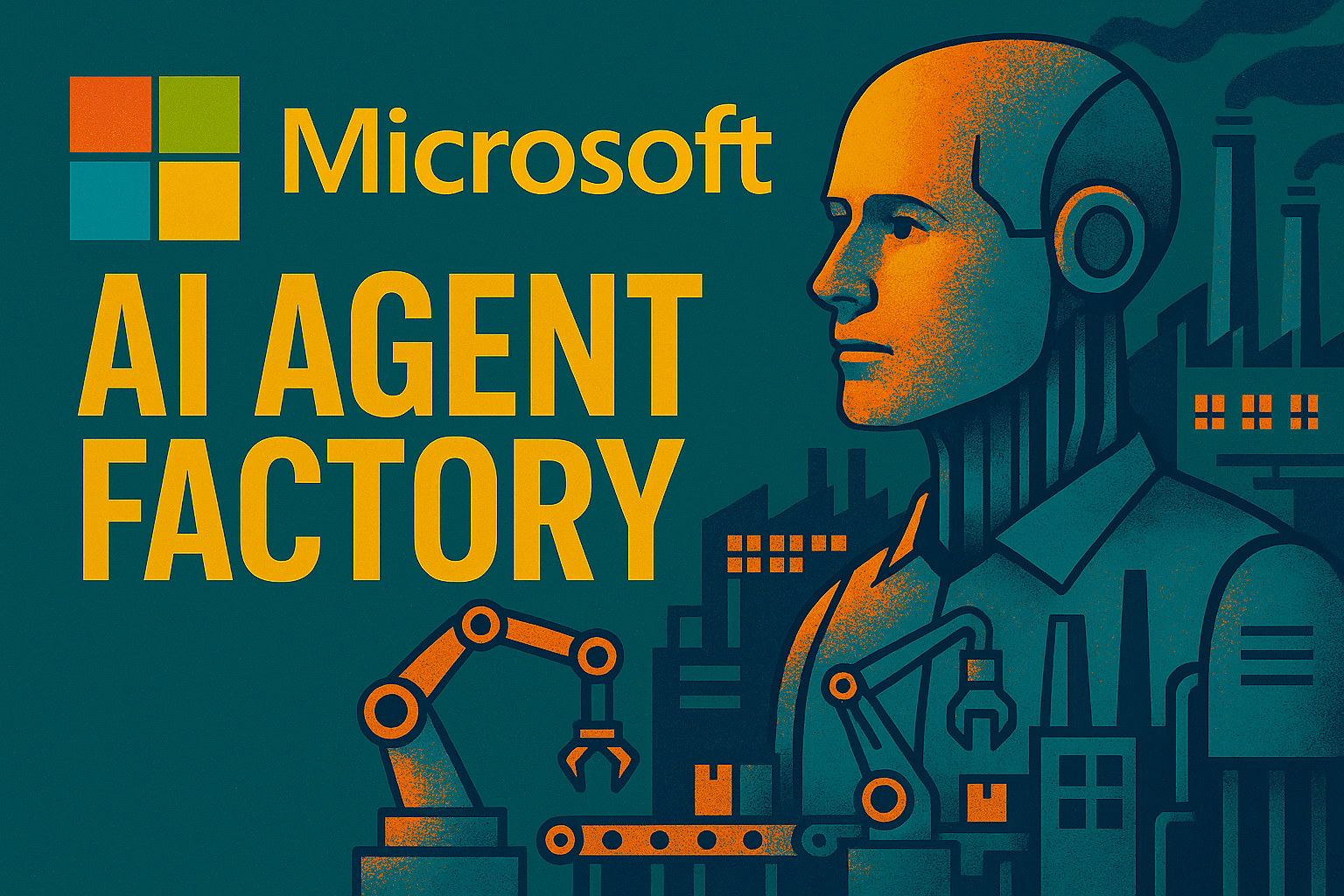
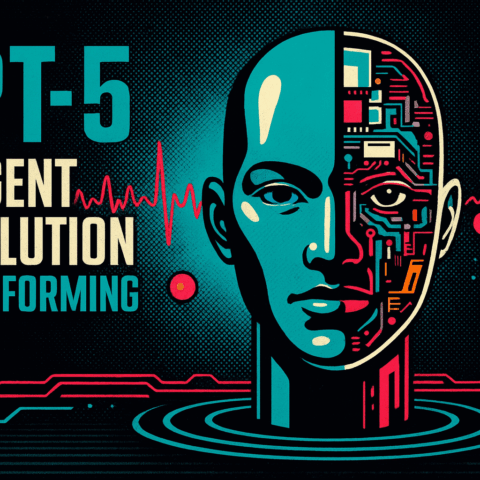

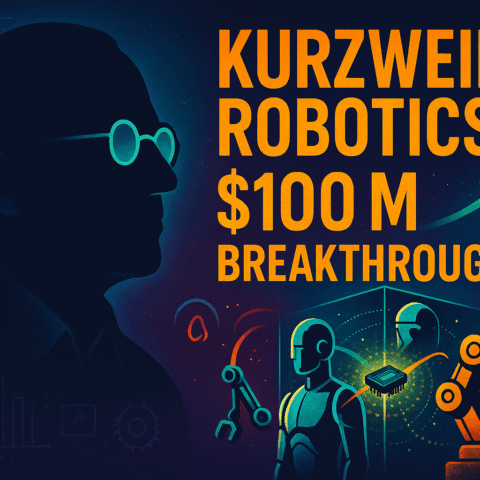
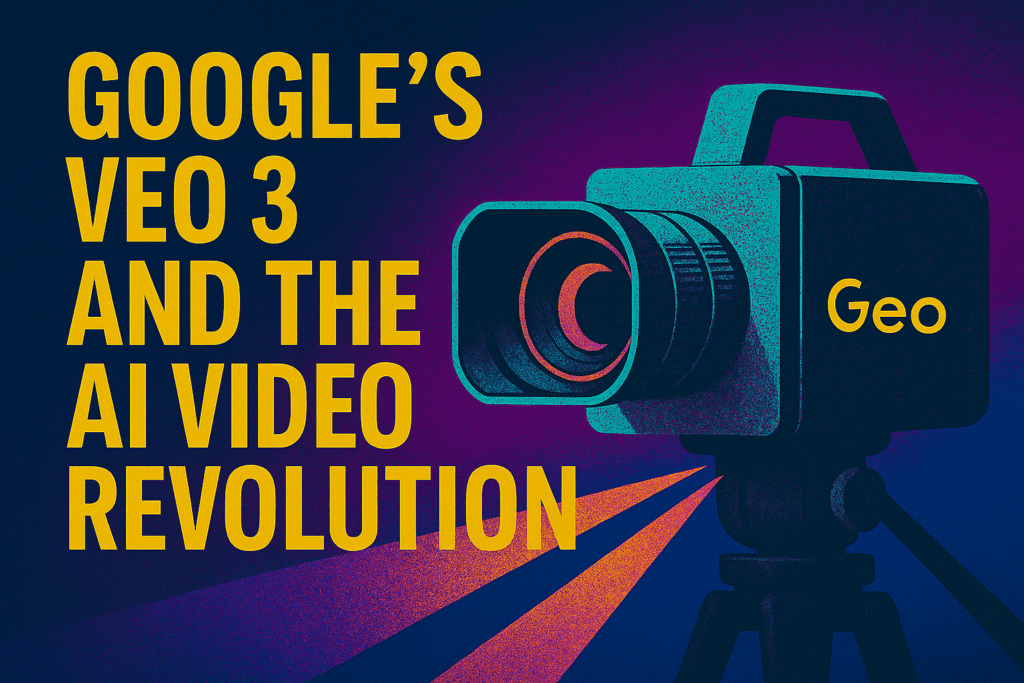
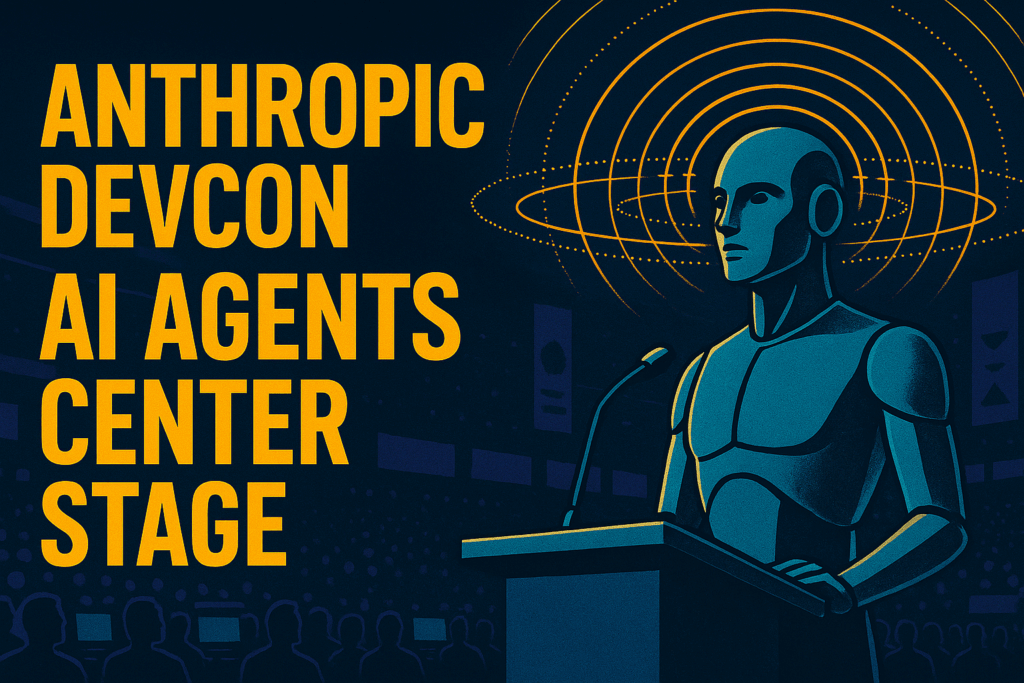


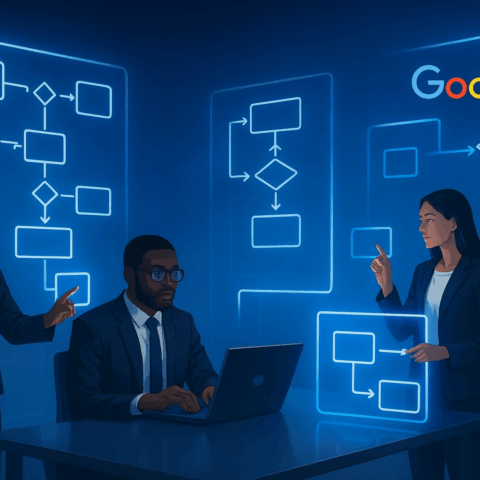
![Meta's $300 million gamble reshapes the AI talent wars Meta has launched the most aggressive talent acquisition campaign in technology history, offering individual compensation packages up to $300 million over four years to elite AI researchers. CNBC +7 This unprecedented strategy, coupled with $60-65 billion in infrastructure investments for 2025, represents Mark Zuckerberg's all-in bet to transform Meta from an AI follower into the leader in the race toward superintelligence. Data Center Dynamics +5 The campaign has successfully recruited dozens of top researchers from OpenAI, Google DeepMind, and Apple, while fundamentally disrupting compensation norms across the entire AI industry and raising critical questions about talent concentration and the future of AI development. CNBC +8 The $300 million figure decoded: Individual packages, not aggregate spending The widely reported "$300 million AI brain drain" figure represents individual compensation packages for elite AI researchers over four-year periods, not Meta's total spending on talent acquisition. Gizmodo +3 According to Fortune's July 2025 reporting, "Top-tier AI researchers at Meta are reportedly being offered total compensation packages of up to $300 million over four years, with some initial year earnings exceeding $100 million." Fortune Yahoo Finance These packages primarily consist of restricted stock units (RSUs) with immediate vesting, rather than traditional signing bonuses, as Meta CTO Andrew Bosworth clarified: "the actual terms of the offer wasn't a sign-on bonus. It's all these different things." CNBC +2 The compensation structure includes base salaries up to $480,000 for software engineers and $440,000 for research engineers, Fortune supplemented by massive equity grants and performance bonuses. Fortune SmythOS Specific examples include Ruoming Pang from Apple receiving $200+ million over several years Fortune and Alexandr Wang from Scale AI receiving $100+ million as part of Meta's $14.3 billion investment in Scale AI. Fortune +3 OpenAI CEO Sam Altman confirmed these figures on the "Uncapped" podcast, stating Meta made "giant offers to a lot of people on our team, you know, like $100 million signing bonuses, more than that (in) compensation per year." CNBC +6 This compensation strategy emerged after Meta's Llama 4 model underperformed expectations in April 2025, prompting Zuckerberg to take personal control of recruitment. CNBC +3 The CEO maintains a "literal list" of 50-100 elite AI professionals he's targeting, making direct phone calls to recruit them. Fortune +5 While not every hire receives nine-figure packages—typical offers range from $10-18 million annually—the peak compensation levels have redefined industry standards and forced competitors to dramatically increase their retention spending. TechCrunch Meta raids the AI elite: Key acquisitions from competitors Meta's talent acquisition campaign has systematically targeted the architects of competitors' most successful AI models, with particular focus on researchers with expertise in reasoning models, multimodal AI, and foundation model training. SmythOS Fortune The company has successfully recruited 11+ researchers from OpenAI, including several co-creators of ChatGPT and the o-series reasoning models. South China Morning Post +4 Notable acquisitions include Shengjia Zhao, named Chief Scientist of Meta Superintelligence Labs in July 2025, who co-created ChatGPT, GPT-4, and all mini models; CNN Trapit Bansal, a key contributor to OpenAI's o1 reasoning model who pioneered reinforcement learning approaches; TechCrunch TechCrunch and Hongyu Ren, co-creator of GPT-4o, o1-mini, and o3. CNBC +2 From Google DeepMind, Meta secured Jack Rae, the pre-training tech lead for Gemini who also led development of Gopher and Chinchilla; Pei Sun, who led post-training, coding, and reasoning for Gemini after creating Waymo's perception models; Fortune CNBC and multiple other Gemini contributors. CNBC Silicon UK The Apple raid centered on Ruoming Pang, head of Apple's AI foundation models team who led Apple Intelligence development, along with three senior team members including distinguished engineer Tom Gunter. MacDailyNews +4 These acquisitions follow a clear strategic pattern: Meta is targeting researchers with proven expertise in areas where it has fallen behind, particularly reasoning models and multimodal AI. SmythOS The recruits often move as cohesive teams—for instance, the OpenAI Zurich office researchers Lucas Beyer, Alexander Kolesnikov, and Xiaohua Zhai all joined Meta together. TechCrunch TechCrunch This team-based approach accelerates Meta's ability to replicate successful research methodologies while disrupting competitors' ongoing projects. The talent flow has created significant disruption at source companies. OpenAI's Chief Research Officer Mark Chen described the exodus in an internal memo: "I feel a visceral feeling right now, as if someone has broken into our home and stolen something." Yahoo! +2 Apple's AI strategy faced major setbacks after losing its foundation models leadership, forcing a reorganization under Craig Federighi and Mike Rockwell. MacRumors Superintelligence ambitions drive massive infrastructure buildout Meta's creation of the Meta Superintelligence Labs (MSL) in June 2025 represents a fundamental reorganization of its AI efforts under unified leadership. Led by Alexandr Wang as Chief AI Officer and Nat Friedman heading AI products and applied research, MSL consolidates all AI research with the explicit goal of achieving "personal superintelligence for everyone." CNBC +2 Zuckerberg's internal memo declared: "As the pace of AI progress accelerates, developing superintelligence is coming into sight. I believe this will be the beginning of a new era for humanity." CNBC +2 The infrastructure investments supporting this ambition dwarf anything previously attempted in corporate AI research. Meta committed $60-65 billion for 2025 alone, representing a 50% increase from 2024, with plans for "hundreds of billions of dollars" in coming years. Data Center Dynamics +7 The company is constructing two revolutionary data centers that abandon traditional designs for speed-focused "tent" infrastructure. The Prometheus Cluster in Ohio will provide 1 gigawatt of capacity by 2026, featuring on-site natural gas generation through two 200MW plants to bypass grid limitations. The Hyperion Cluster in Louisiana represents an even more ambitious undertaking: a 2GW facility scaling to 5GW, covering an area "the size of most of Manhattan" with a $10 billion investment on 2,250 acres. Opportunity Louisiana +5 Meta's technical infrastructure includes 1.3+ million GPUs targeted by end of 2025, utilizing prefabricated power and cooling modules for rapid deployment and sophisticated workload management to maximize utilization. PYMNTS +3 The company has shifted its research focus from traditional AGI to what Chief AI Scientist Yann LeCun calls "Advanced Machine Intelligence" (AMI), arguing that human intelligence is specialized rather than generalized. Columbia Engineering AI Business Current research priorities span computer vision (Perception Encoder, Meta Locate 3D), foundation models (continued Llama development despite setbacks), world models for predicting action outcomes, and collaborative AI for multi-agent reasoning. Meta meta The Llama 4 "Behemoth" model's failure—attributed to chunked attention creating blind spots and economically unviable inference—led to a strategic pivot toward smaller, more efficient variants while the new superintelligence team addresses fundamental research gaps. CNBC +4 The talent war escalates: Compensation packages reach athlete-level extremes The AI talent war has created compensation dynamics unprecedented in technology history, with packages now exceeding those of professional athletes and Wall Street executives. Meta's aggressive offers have forced industry-wide salary inflation, with typical AI researcher packages at major labs now ranging from $2-10 million annually. Ainvest +4 OpenAI responded to defections by jumping stock compensation 5x to $4.4 billion company-wide, offering $2+ million retention bonuses with one-year commitments and $20+ million equity deals to prevent key departures. Fortune +3 Despite Meta's financial firepower, retention data reveals that money alone doesn't guarantee loyalty. Meta maintains only a 64% retention rate, the lowest among major AI labs, while experiencing 4.3% annual attrition to competitors. SmythOS The Register In contrast, Anthropic achieves an 80% retention rate with more modest compensation ($311K-$643K range) by emphasizing mission-driven culture and researcher autonomy. The Register +6 The data shows an 8:1 ratio of OpenAI departures favoring Anthropic over the reverse, suggesting that purpose and product quality matter as much as pay. signalfire Analytics India Magazine The compensation arms race extends beyond individual packages to strategic "acqui-hires." Google executed a $2 billion deal to bring back Noam Shazeer and the Character.AI team, while Microsoft absorbed most of Inflection AI for $650 million. Fortune Fortune These deals allow companies to acquire entire teams while potentially avoiding regulatory scrutiny of traditional acquisitions. Geographic concentration intensifies the competition, with 65% of AI engineers located in San Francisco and New York. signalfire However, emerging hubs like Miami (+12% AI roles) and San Diego (+7% Big Tech roles) are beginning to attract talent with compensation at 83-90% of Bay Area levels. Fortune The elite talent pool remains extremely constrained, with experts estimating only 2,000 people worldwide capable of frontier AI research, driving the extreme premiums for proven expertise. The Register Fortune Industry experts divided on Meta's bold strategy Industry analysis reveals deep divisions about Meta's approach and its implications for AI development. SemiAnalysis characterizes the compensation packages as making "top athlete pay look like chump change," with typical offers of "$200M to $300M per researcher for 4 years" representing "100x that of their peers." CFRA analyst Angelo Zino views the acquisitions as necessary long-term investments: "You need those people on board now and to invest aggressively to be ready for that phase of generative AI development." Yahoo! CNBC Academic researchers express concern about the broader implications. MIT's Neil Thompson and Nur Ahmed warn that by 2020, "nearly 70% of AI Ph.D. holders were recruited by industry, up from only 21% in 2004," creating a troubling brain drain that "leaves fewer academic researchers to train the next generation." MIT Sloan Brookings They argue this concentration could "push to the sidelines work that's in the public interest but not particularly profitable," including research on AI bias, equity, and public health applications. MIT Sloan Competitors have responded with varying strategies. Google relies on personal intervention from leadership, with co-founder Sergey Brin "personally calling an employee and offering them a pay rise to stay," while maintaining advantages in computing power and proprietary chips. Fortune +2 Microsoft has "tied its AI fate to OpenAI" while building in-house capabilities, even reviving the Three Mile Island nuclear plant to power AI operations. PYMNTS OpenAI faces the most direct impact, with Sam Altman criticizing Meta's approach as "distasteful" and arguing that "missionaries will beat mercenaries." CNBC +6 The venture capital community sees Meta's strategy accelerating market consolidation. HSBC Innovation Banking reports that "42% of U.S. venture capital was invested into AI companies in 2024," EY with compensation inflation making it increasingly difficult for startups to compete. Menlo Ventures' Tim Tully notes that "Stock grants for these scientists can range between $2 million to $4 million at a Series D startup. That was unfathomable when I was hiring research scientists four years ago." Fortune Policy experts worry about innovation concentration. The Brookings Institution recommends "direct support to keep [academic researchers] from leaving for industry" and "more open immigration policies" to broaden the talent pool. Brookings Some propose international collaboration similar to CERN to ensure more distributed AI development and prevent unhealthy concentration of capabilities in a few corporations. MIT Sloan Conclusion Meta's $300 million talent acquisition gambit represents more than aggressive recruitment—it's a fundamental bet that concentrating elite AI talent through unprecedented compensation can overcome technical disadvantages and establish superintelligence leadership. Early results show mixed success: while Meta has successfully recruited dozens of top researchers and committed massive infrastructure investments, the company still faces the lowest retention rate among major AI labs and continued technical challenges with its foundation models. The Register +2 The strategy has irrevocably transformed the AI talent landscape, normalizing eight and nine-figure compensation packages while accelerating the concentration of expertise in a handful of well-funded laboratories. Fortune Axios This concentration may accelerate progress toward AGI but raises critical questions about research diversity, academic sustainability, and the public interest in AI development. As one MIT researcher noted, industry benchmarks now drive the entire field's research agenda, potentially sidelining work on bias, equity, and public applications. Meta's ultimate success will depend not just on financial resources but on its ability to create a mission-driven culture that retains talent and translates unprecedented human capital investment into breakthrough capabilities. Computerworld +2 With competitors matching compensation while maintaining advantages in culture (Anthropic), infrastructure (Google), or partnerships (Microsoft), Meta's superintelligence ambitions face significant challenges despite unlimited financial backing. The Register The AI talent wars have entered a new phase where money is necessary but insufficient—and where the concentration of capabilities in corporate hands may fundamentally reshape not just the industry but the trajectory of human technological development.](https://news.envychip.com/wp-content/uploads/2025/07/Gwum3dibgAYIuX--480x480.jpeg)

